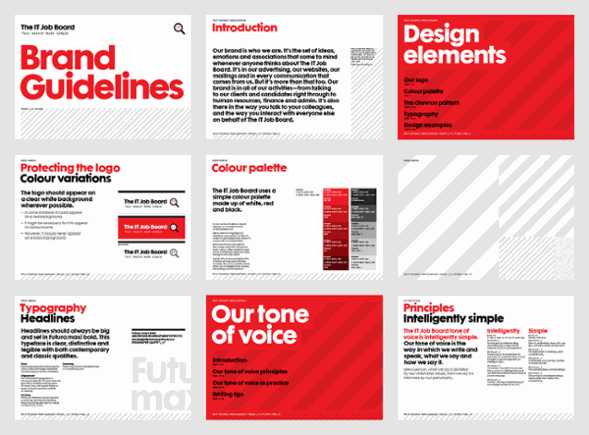9 Crucial Branding Mistakes to Avoid

Your brand is a window into the heart and soul of your business and should, therefore, be taken very seriously. Branding is not just a buzzword for getting a one-time campaign right—it encapsulates everything you want to communicate to your customers.
The hard part? As your customers evolve over time, so too should your branding.
Here are nine crucial mistakes to avoid:
- Not getting the logo right
- Missing out on the value proposition
- Not adhering to brand guidelines
- Jumping on trends
- Forgetting what makes your brand distinct
- Thinking locally instead of globally
- Valuing consistency over character
- Neglecting public perception
- Ignoring a crisis instead of owning up
1. Not getting the logo right
A logo says a lot about your brand, but if you don’t get it right, in the beginning, it can be too complicated to change down the road. This is especially true when you don’t have the presence or stickiness to do so without worrying that you will lose valuable ground.
Edible Arrangements was held at the mercy of its Papyrus font for quite some time before altering its look 10 years after inception.

2. Missing out on the value proposition
Whether it’s your tagline, mission statement or even a headline on your homepage, not effectively communicating to audiences what makes your brand special will have people bouncing from your site before you know it.
Outline what you do and why it matters—and be sure to avoid:
- Overuse of buzzwords
- Vague terminology
- Not communicating the problems you solve
- Flying too close to what competitors are saying
3. Not adhering to brand guidelines
Nothing says forgettable like a business that doesn’t have its identity buttoned up. Brand guidelines serve to demonstrate what you represent, and what differentiates you from your competitors. Waver from the guidelines and your customers will gravitate toward a business with its act together.
Dismissing or not adhering to these brand guidelines is a nail in the coffin:
- Logo usage
- Color schemes
- Visuals and imagery
- Voice and messaging
- Fonts and typography

Image source: Ragged Edge
4. Jumping on trends
We’re living in an era of constant consumption where news, fast fashion and social media updates grab our attention. That means something is always trending, be it a hashtag, story, item of clothing, design style, event, song—and the list goes on.
It is important to remember that these waves come and go. So while some brands get lost in the tide of incoming and outgoing trends—often failing miserably in the process—you’ve got to keep your eyes on the prize and don’t waste valuable time and resources on invaluable returns.
5. Forgetting what makes your brand distinct
Sometimes your customer demographics change—and that’s okay as long as your branding reflects this new subset of customers and you connect with them appropriately, including any remaining outliers.
To stay relevant, Lord & Taylor had to rebrand itself for a younger generation of millennial consumers while striking the right balance between its original clientele of older women—which was no easy feat.


6. Thinking locally instead of globally
Even if you are a business rooted in the local community, the world as we know it is becoming more and more diverse. The last thing you want your brand to be associated with is ignorance or ethnocentricity.
The best way to welcome customers from a myriad of backgrounds is to:
- Use language everyone can understand
- Invest in reputable translation services
- Practice cultural sensitivity
- Be inclusive and respect feedback from all
- Do you research when venturing into unknown territories
7. Valuing consistency over character
Your brand should communicate a consistent message to reinforce your value proposition, mission, products and services.
However, each channel or platform represents a chance to create a different view or persona of your brand. As long as the brand knows what it stands for, consistency can take a back seat.
What’s the point of sharing the exact same message on Twitter, Facebook and LinkedIn? Seems a bit redundant, and audiences will likely tune out or ignore certain channels as a result.
8. Neglecting public perception
The public’s perception of your brand might not be the rosiest, but instead of chalking it up to bad luck or pointing fingers, it’s time to get serious about turning that frown upside down.
Run polls, gather feedback, conduct research, dust off the positive media, whip up a great new campaign idea or head back to the drawing board. Just be sure to steer the ship in the right direction before it hits a giant iceberg.
9. Ignoring a crisis instead of owning up
Crisis management is a huge facet of how a brand is perceived by the public. Equifax, anyone? Or how about that Kylie Jenner Pepsi campaign?
All too often, these types of disasters can have long-term impacts on a brand. And while the right infrastructure should be put in place to minimize potential mishaps, for the ones that slip through the cracks, addressing the situation properly becomes a brand’s only line of defense.
And the best thing you can do is own up to it by showing some humanity and throwing yourself into the flames instead of sacrificing the well-being of your customers.

Conclusion
No brand is built overnight but you can start laying the groundwork for what you want your brand to represent in all of the most crucial, self-defining aspects of a business right now.
What branding mistakes have you witnessed that you would include on this list? Share your thoughts in the comment section below.




